The Big Three in the Wristwatch Industry! Patek Philippe's History, Appeal, and Masterpieces
Click here to watch a video about the history of Patek Philippe.
Patek Philippe: History from 1839 to the Present

The Origins of Patek Philippe
Therefore, the company's name at the time of its founding was "Patek Czapek."
Then there's the third person. It was in 1844 that Patek met Adrien Philippe, who would later become an important partner of his.
It all began when Philippe won a bronze medal at the Paris Industrial Exhibition for his keyless winding and hand setting system.
Nowadays it is common to wind the mainspring with the crown, but at the time it was still common to turn it with a key, so he introduced an innovative winding method.

By reaching out to Philippe, who was such a brilliant engineer, Patek agreed to make watches with him the following year in 1845, and together they established the brand "Patek Philippe."
At the same time, original co-founder François Capek decided to leave the company due to differences in direction.
The two began by producing pocket watches using the keyless winding and hand setting system developed by Philippe.
International expansion
The brand name was changed in 1851, and the company took its first major step in expanding its business during the Great Exhibition held in London that same year .
Patek Philippe not only exhibited pocket watches at the Great Exhibition in London, but also created a pendant watch with a blue enamel and a diamond rose for Queen Victoria.

Source: Galerie
Queen Victoria's husband, Prince Albert, also purchased a quarter repeater watch in a hunter case.
All brands, including Patek Philippe, find that participating in this first World's Fair is good advertising.
This is because if a brand is favored by the king or queen of a country, word of it will spread across the ocean to the bourgeoisie, and it can become a desirable brand.
This was the beginning of Patek's success, as the company began exhibiting at expositions and world's fairs and producing watches for national dignitaries.
Another notable event in 1851 was Patek's trip to America.
He wanted to expand and grow his business internationally.
During this trip, he met Charles Lewis Tiffany in New York, beginning a partnership with Tiffany that continues to this day.

* Charles Lewis Tiffany
Here again, it is clear that the partners are high-end jewellery houses, and Patek was clearly targeting the wealthy.
The next World's Fair was held in Paris in 1855, where a Patek Philippe watch won a gold medal.
In the early days of its founding, Patek Philippe made highly elaborate and complicated watches aimed at the very upper classes, such as royalty, aristocrats, and the bourgeoisie.
The next generation of Patek Philippe
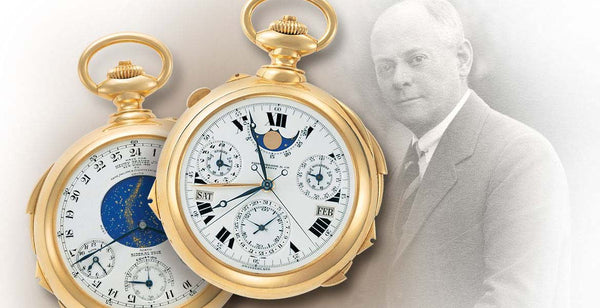
Graves Supercomplication Pocket Watch (Patek.com)
When Antoine Patek died in 1877, Adrien Philippe brought his son, Emile Joseph Philippe, into the business, training and mentoring him.
In 1894, co-founder Adrian Philippe also passed away.
As a manager, Joseph worked hard to protect the legacy built by his father and Antoine and made a significant contribution to the company's growth.
One day, Patek Philippe received a large order from a man named Henry Graves Jr. 
Graves was a wealthy American banker and a fan of Patek Philippe watches.
Graves placed an order for a supercomplication pocket watch through Tiffany & Co.
With 24 functions, two dials and 920 components, this pocket watch was one of the most complicated in the history of pocket watchmaking.

Source: celebremagazine
This piece is now known as the Henry Graves Supercomplication "Graves Watch".
This strong connection with Tiffany enabled them to attract the wealthy American clientele, which was rapidly growing at the time.
Transition to the Stern family

Graves's orders helped Patek Philippe to survive the global economic downturn caused by the Great Depression in 1929 after the First World War.
However, even Patek Philippe was unable to resist the ravages of the prolonged global depression, and was forced into extremely tough management.
The Great Depression also had a direct impact on the wealthy, who were the main customer base, and most of them were no longer able to purchase Patek Philippe watches.
Given this situation, you will need to look for someone to buy ownership of the company.
First, they approached Jacques-David LeCoultre of Jaeger-LeCoultre, who had been supplying them with ébauches, but were turned down.
The next company to approach was Stern Frères, who had been supplying dials to Patek since 1932.
The company was founded by the typical brothers, Jean and Charles Stern, who came to an agreement to acquire Patek Philippe.
When you hear the word "acquisition," it doesn't conjure up a very good image, but the Stern family's dial manufacturer already had a good relationship with Patek Philippe, and a relationship of trust had been built between the two companies even before the acquisition.
Therefore, this is not a hostile takeover, but a friendly one, combining the prestige of a dial manufacturer with that of Patek Philippe, and the business will start up under new management.
In addition, the Sternlund brothers brought in Jan Pfister from Taban as a technical advisor.
Taban is a brand that is hardly known in Japan, but at the time it was a company with about the same brand power as Breitling is today.
At the time, the major companies were Omega at the top, followed by Longines, and then Taban, the third largest company.
Pfister was a watchmaker and horologist, and the addition of his senior technicians was a major boost for Patek Philippe.
For more information about Taban, please see this video:
Change and Reform
In this way, Patek Philippe has once again managed to regain its footing, but if a change in management is enough to correct course to this extent, then surely its other brands will also be able to grow steadily.
Of course, the new management team has had some influence, but there has been a clear change in direction.
In the 1920s and 1930s, revolutions occurred in Western countries, leading to the abolition of monarchies and the move towards democracy.
Therefore, it was no longer possible to continue relying on royalty to buy their products, as had been the case up until then, and this was exacerbated by the Great Depression.
And after recovering from the Great Depression, the structure that emerged was one in which the bourgeoisie reigned supreme.
Although they are not as ultra-wealthy as royalty, the bourgeoisie, who have made their fortunes through business, are overwhelmingly larger in number than royalty.
By targeting this market, Patek was able to get on track.
The original method of making watches was to produce a wide variety of watches in small quantities, and to create the highest quality items for an individual or their family.
However, the production style adopted by Taban Pfister was to create their own movements and then apply various exterior patterns (dials and cases) to them to increase variety.
As you know, before Patek Philippe began producing its own movements, it used high-end ebauche movements from manufacturers such as Jaeger-LeCoultre.
By designing and producing it in-house, it became possible to share and manage parts more easily, resulting in significant cost reductions and increased production capacity.
Omega, Longines and Rolex were also producing in a similar style, but Pfister applied it to ultra-luxury brands and made them successful.
Now let's take a look at Patek Philippe's first movement.
In-house Caliber 120-12 and the Calatrava

Patek Philippe's masterpiece, the Calatrava ref. The 96 was introduced in 1932.
It was a small watch, measuring 31mm in height and 9mm in diameter.
At that point , Patek Philippe relied on LeCoultre movements, so the Calatravas produced in the first two years were fitted with LeCoultre movements.
Two years later, in 1934, the long-awaited in-house produced Cal. 12-120 was completed, the first movement developed under the new management of Pfister.
This model's overall sophisticated design captivated customers around the world and it is one of Patek Philippe's signature models, produced from 1932 to 1973.
The experience of the Great Depression led to a major shift in the priorities of movement design, leading to the creation of in-house movements that were comparable to those of other companies.
Like many movements of the time, the Caliber 12-120 was equipped with a small second hand and was designed with a fourth wheel at the 6 o'clock position that rotates once per minute to directly drive the second hand.
This traditional layout optimizes the volume of the movement by distributing the moving parts in the same plane.
The escape wheel and fourth wheel are fixed by dedicated bridges, while a long, thin bridge spanning the movement is designated for the second and third wheels. 
*Gear train arrangement of Caliber 12-120
This bridge structure, which originated from pocket watches, is the prototype design for Swiss hand-wound movements from the early 20th century.
In contrast to full plate and three-quarter plate construction, the bridge structure offers excellent access to and visibility of the individual components (aesthetic appearance) and simplifies maintenance.
At the same time, the configuration of such bridges and the number of edges make them ideal for decoration.
As a result, such multi-bridge constructions have become exclusive to high-end watches and were targeted for cost-cutting measures after the quartz crisis.
I think you can imagine that making it on one plate is obviously easier in terms of both cost and effort.
Center Second Caliber 12-120 SC

At the time, perhaps the most fascinating thing about the brand was its pursuit of the center second hand.
When considering how to maximize the beauty of the exterior, the centre second hand is a necessity.
If it is a luxury brand, then this importance is even greater.
While center seconds are common in modern watches, the movements of that time used a "small seconds system" in which the gear train ended at the 6 o'clock position and directly drove the small seconds hand explained earlier.
In 1939, Patek Philippe produced the caliber 12-120 SC (SC stands for center seconds), which was fitted to the refs. 96, 565 and 570.
This movement incorporates a sophisticated indirect centre seconds mechanism made by Victorin Piguet.
This movement with central seconds was one of the earliest in the world of watchmaking.

The mechanism of this movement consists of three additional gears driven by a fourth wheel at 6 o'clock.
This gear is located at the top of the gear train and the "seconds" wheel, which is the role of the fourth wheel, can be moved to the center using an additional wheel.
This mechanism is the standard way to indirectly display centre seconds, but Victorin Piguet has designed an extremely sophisticated mechanism, including the lever that supports the intermediate wheel.
Indirect drive movements, including chronographs, can sometimes cause the second hand to wobble due to backlash in the movement of the gears.
To solve this problem, the tension spring, visible on the right, applies moderate pressure to keep the gears meshing.
Automatic movement Caliber 12-600AT & 27-460
Explaining automatic winding watches would be quite difficult, so for now it's enough to just understand that they are "incredibly amazing!"
In 1953, Patek Philippe released its first automatic movement, the Cal. 12-600 AT (AT stands for automatic winding), which was installed in the ref. 2526.
The watch combined three of the brand's technological innovations: automatic winding, a Gyromax balance, a waterproof case, and an 18K rotor.
The Calibre 12-600 AT is widely recognized as one of the most exquisitely crafted automatic movements ever created, not only for its outstanding technical qualities but also for its design and decoration.
To differentiate itself from other automatic winding systems, Patek Philippe devised a complex and more efficient winding mechanism.
It is centered around an eccentric wheel that is driven by a rotor.
This, in turn, drives a pair of pawls which interact with the teeth of a ratchet wheel to wind the mainspring.
The complex winding mechanism was further refined and was later passed on to the legendary 27-460.

This version featured several improvements, including ball bearings instead of rotors and adjustable stud holders.
It is fitted with a high-quality blued steel double-layer balance spring and has a frequency of 19,800 vibrations.
When fully wound, it has a power reserve of over 50 hours.
Patek Philippe's various patents
Patek Philippe holds numerous patents, befitting its reputation as a luxury brand.
Among them, the most notable is the 1949 Gyromax .
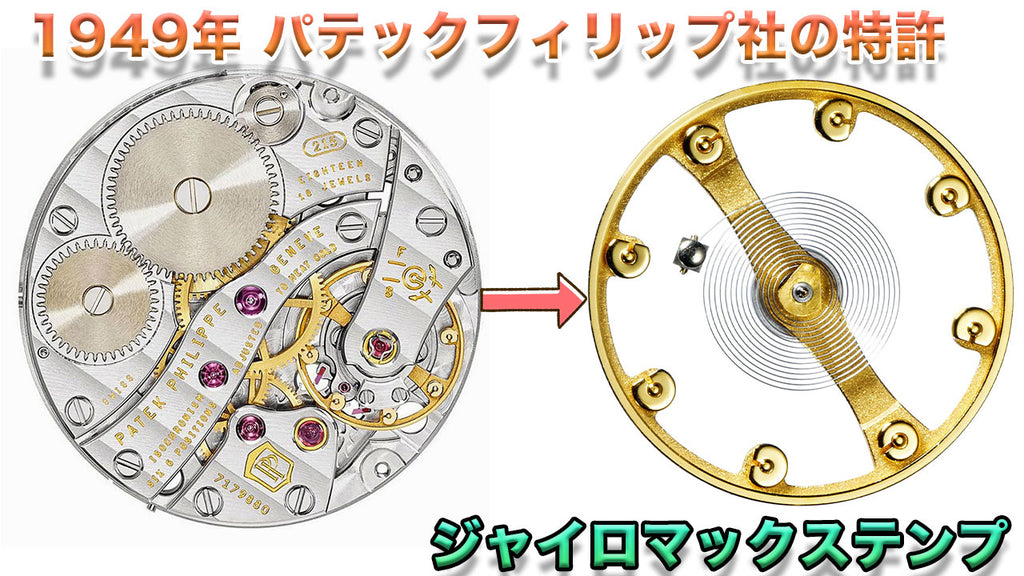
Patek Philippe, Vacheron Constantin and Audemars Piguet collaborated on research and development, and Patek Philippe obtained the patent.
Compared to existing free-sprung mechanisms that use a balance screw on the side of the balance, this mechanism places an eccentric weight on top of the balance wheel, making adjustments relatively easy and reducing air resistance.
On the other hand, there was the disadvantage that the adjustment range was smaller than that of a watch with a regulator, but Patek Philippe had talented engineers and were able to equip the watch with the high-precision Gyromax.
Other notable patents that Patek Philippe has applied for over the years include:
1881 Precision regulator
1889 Perpetual calendar mechanism
1902 The first double chronograph
1949 Gyromax Temp
1953 Automatic caliber 12-600AT
1959 Time Zone Clock
1977 Ultra-thin automatic Caliber 240
1986: Retrograde perpetual calendar introduced
1996 Annual Calendar Mechanism
Patek Philippe has applied for over 100 patents to date, including for watch dials, cases, clasps, etc.
Patek Philippe masterpieces
We have already explained the Calatrava in detail, so we will skip that part, but there are many other representative models, so we will introduce them from here.
・Golden Ellipse

The appeal of Golden Ellipse is its universality.
First introduced in 1968, the Ellipse celebrates its 53rd anniversary this year, making it the second longest-running watch after the Calatrava.
The "Golden" in Golden Ellipse is often thought to refer to the precious metal of the case.
But what it actually represents is the "golden ratio."
The ratios derived from ancient mathematical formulas are ones that anyone can see as being aesthetically pleasing.
Inspired by this universal number, the softly curved "Golden Ellipse" was created.
In addition to the mathematical background, there is another important reason behind the Ellipse case design.
It was conceived within the Maison Patek Philippe.
While such a concept is not uncommon today, at the time it was common for the most important exterior elements, such as the case, to be designed by external designers.
It is said that it takes decades for a vertically integrated, or "in-house design," concept to become outstanding, but the Golden Ellipse design took that same amount of time to perfect.
This design is a watch that embodies Patek Philippe's commitment to design.
Nautilus

Patek Philippe introduced the Nautilus in 1976.
Since then, the watch has become one of the brand's most popular watches.
When Patek Philippe introduced the Nautilus in 1976, it wasn't the first luxury steel sports watch.
This is because the Royal Oak, released by Audemars Piguet four years earlier, in 1972, made this claim.
However, the Nautilus was positioned at a higher price point, and advertising for the first model, the reference 3700, exploited this idea and price range, introducing the watch with the tagline "One of the most expensive watches in the world made in steel."
The watch's distinctive shape also attracted attention.

The bezel is neither circular nor rectangular, but rather octagonal with outward curving sides.
Furthermore, with a diameter of 42 mm, the Nautilus was 3 mm larger than the Royal Oak, a size that was ahead of its time.
So although it looks similar to the Royal Oak, it is a completely different watch.
So why did such similar watches come into being? It's because the designers of the Royal Oak and Nautilus are the same.

Gerald Genta, who designed the Royal Oak for Audemars Piguet, is a famous watch designer who also worked on the Polerouter for Universal Genève and the Constellation for Omega.
In 1974, Genta brought sketches of the Nautilus to Patek Philippe.
The unusual case shape, inspired by a ship's porthole, features a rounded octagonal bezel with hinged sides.
The dial features embossed grooves and an integrated metal bracelet, highlighting the watch's individuality and making it instantly recognizable as a Nautilus.
At this time, Patek Philippe's collection consisted mostly of elegant gold watches equipped with advanced complications such as perpetual calendars and minute repeaters.
Although there was initial skepticism about whether such a large, sporty watch was suitable for the brand, it turned out to be a huge success.
The first Nautilus, Ref. 3700, was equipped with the thin automatic movement 28-255, developed by Jaeger-LeCoultre in 1967 for Vacheron Constantin, Patek Philippe, and Audemars Piguet.
This movement was first installed in the Royal Oak and was named Caliber 2121.
・Gondolo

Gondolo was born in 1993, but it has a history.
In 1872, Patek Philippe sold its first creation, a pocket watch, to the jewellery dealer Gondolo & Lavrio in Rio de Janeiro, Brazil.

This sale established a strong relationship between the Swiss watchmaker and the Brazilian jeweller (which would last until 1927) and led to the sale of thousands of watches.
In fact, sales to Gondolo & Labrio are said to have accounted for one-third of Patek's production at the time.
Following pocket watches, Patek Philippe also began producing wristwatches for Gondolo & Labourio around 1910.
At that time, Europe was suffering from the recession and world war, and watch sales were not good, so having Gondolo purchase our watches was a great support to us.
As a result, designs that pleased Gondolo were inevitably produced, and these watches came to be known as "shaped watches".
Shaped watches refer to watch case silhouettes that are not circular, such as square, rectangular, tonneau or cushion shaped.

In the 1920s, watches changed from pocket watches to wristwatches, which coincided with the Art Deco boom, and it was a time when blocky watches were popular.
The Gondolo was inspired by the wristwatch version of the Gondolo Chronometro, which was sold to Gondolo & Lavrio during the Art Deco period, and was revived in 1993.
・Aquanote
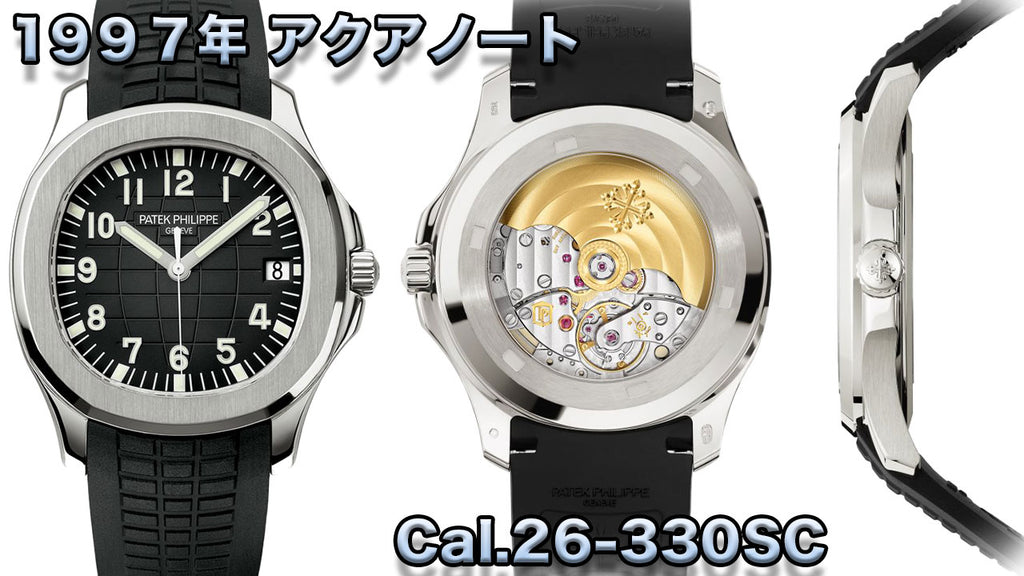
Launched in 1997, the Aquanaut was designed for young people with a penchant for modern style.
In the late 1990s, the technology industry exploded and the stock market rose, creating the "dot-com bubble."
Young people in particular saw the potential in new industries, and many companies were established, and an increasing number of people quickly sold their businesses and achieved a certain amount of wealth at a young age.
The luxury market responded, designing products targeted at younger collectors, and Patek Philippe responded with the Aquanaut.
This is the first collection that Patek Philippe has released since the launch of the Nautilus in the '70s, following the launch of the women's model Twenty~4 in 1999.
The reference 5060A was the first Aquanaut model released and has a case size of 35.6 mm.
This model looks like a smaller version of the Nautilus, but the pattern on the dial is quite different and distinctive.
Unlike the Nautilus's horizontal striped pattern, the Aquanaut has a block pattern that at first glance looks like a block of chocolate.
Also a first for Patek Philippe is the addition of a rubber strap , which took over a year to develop and test .
The pattern on this strap matches the pattern on the dial, creating a sense of continuity with the case itself.
Aquanaut's design
By the way, it is well known that the Aquanaut was heavily inspired by the Nautilus, but this model was not designed by the legendary designer Gerald Genta.
The Aquanaut was smaller than the Nautilus, but in modern references the Aquanaut is a bit larger.
The screw-down crown and case back make it water resistant to 120m.
The sporty rubber "Tropical" strap sets this model apart from the more formal Nautilus.
・Twenty~4

Designing a women's watch is one of the biggest challenges for any brand.
Women often have multiple responsibilities, both personal and professional, and the boundaries between personal and professional life are not as clear as they are for men.
So, the perfect women's watch should suit most occasions and most outfits.
This idea of universal versatility may be what keeps most women's watches from reaching the brand's "icon" level.
Cartier is an exception.
However, Patek Philippe has overcome even that barrier, and one such example is the Twenty~4.
When Patek Philippe designed the Twenty~4, versatility was a top priority.
The goal was to "express the beauty of the modern woman" and create a watch that could accompany a woman throughout the day.
That's why the name includes "24" to represent 24 hours.
Patek Philippe has also taken into account the hidden needs of women, who find it difficult to set the time on automatic watches, and offers a quartz model, which is rare for the brand.
Some may perceive the Twenty-4 as a more stylish version of the Gondolo, and they wouldn't be wrong.
There is certainly a resemblance, particularly when you look at the Gondolo references 4824 and 4825, both of which were introduced in 1993.
But where the Gondolo has a more classical design, the Twenty~4 has a very contemporary look.
By skillfully combining rectangular shapes, Patek Philippe has found the perfect balance between jewelry and watch, giving the Twenty~4 an instantly recognisable profile and exceptional wearability.
Why Patek Philippe watches are so expensive
By looking back at history, I hope you can understand how Patek Philippe has achieved meticulous craftsmanship.
Since the 1970s, machines have been developed that can create parts with high precision using CAD and other methods, so the production of these parts can now be left to machines.
Patek Philippe uses some machinery, but essentially craftsmen create each part by hand, chamfering the edges and applying the Cotes de Genève and Perlé Rouge finishes.
This also applies to the back side, which cannot be seen from the front.
One could say that it's because it's a luxury brand, but there is a purpose behind it.
These processes are done to prevent the watch from rusting.
By applying this to both sides of the parts, the lifespan of the watch itself is extended, people recognize the quality, and it results in high resale values.
Because each watch is carefully crafted, mass production is not possible.
In addition, the craftsmen who make the watches are all first-class people with excellent technical skills.
For these reasons, because the number of watches produced is low and it is a top brand that everyone aspires to, its prices are by far the highest among other watch brands.
Patek Philippe today
Charles Stern became president in 1958, followed by Philippe Stern in 1993, and most recently Thierry Stern in 2009, and the company continues to be run by the same family for generations.
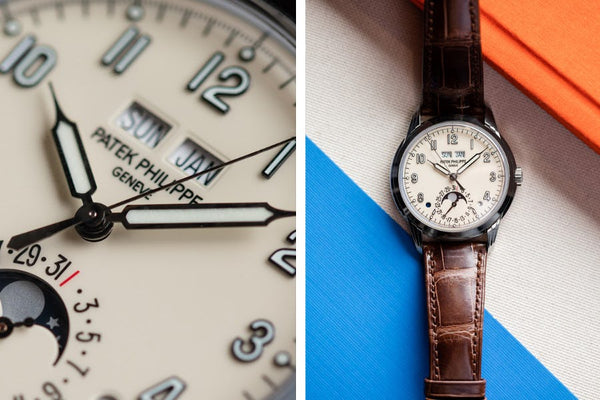
summary
Given that the company's history includes royalty and aristocrats as customers, how much quality is needed to satisfy them?
I think that has always been the case within the company.
Throughout history, there have been times when a company could not survive without catering to the masses, and other brands have put this into practice, but Patek Philippe has not followed that trend, and even today it continues to make its watches using high-quality craftsmanship with little reliance on machines.
Therefore, it can be said that the price of a Patek Philippe watch is determined by labor costs.
However, when you see that the brand has continued uninterrupted for 180 years, it seems that we will always seek out "really good watches" made by skilled craftsmen.
Notable Years and Dates in History
In addition to patent applications, Patek Philippe has had several notable years and important dates in its 180+ years of making watches.
1941: Regular production of perpetual calendar watches begins
In 1962, at the Geneva Observatory, a tourbillon movement set the world record for timing precision for a mechanical watch, a record that still stands today.
1968: Launch of the Golden Ellipse collection
1976: Launch of the Nautilus collection
1985 – Launch of the ultra-thin perpetual calendar, reference 3940
1993: Launch of the Gondolo collection
1996: Opening of new manufacturing facility in Plan-les-Ouates, Geneva
1997: Launch of the Aquanaut collection
1999: Released the Twenty-Four collection
In 2001, the Kaimoon Tourbillon (Ref. 5002) was released, becoming the brand's most complicated watch.
2006: Release of the silicon hairspring "Spiromax"
2008: Silicon escapement introduced. Pulsomax
In 2011, Oscillomax was released, combining the Spiromax, Pulsomax and Gyromax Si balance wheels.
2011: Launch of the first ladies' minute repeater
2015 Calatrava Pilot Travel Time Launched
2019 Calatrava Weekly Calendar Released
For a brand with such an innovative history and evolution as Patek Philippe, the list of milestones is sure to continue for years to come.
Preserving these historical records is especially important to the brand.
In 2001, the Patek Philippe Museum opened in Geneva.
Philippe Stern created the museum to bring together his love of horology, the artistry and tradition of watchmaking for the enjoyment of his visitors.
The collection is not limited to Patek Philippe, but includes around 2,500 timepieces, portraits and other precious objects that represent 500 years of European, Swiss and Genevan watchmaking artistry. 
In addition, the "Patek Philippe Watch Art Grand Exhibition," which introduces the world of Patek Philippe, is being held around the world.
It was held in Dubai in 2012, Munich in 2013, London in 2015, New York in 2017 and most recently in Singapore in 2019.
5 things you may not know about Patek Philippe
1. The Henry Graves Supercomplication isn't Patek Philippe's most complicated watch

The title of most complicated watch was awarded to Patek Philippe in 1989 to mark the company's 150th anniversary.
This highly complicated watch is Patek Philippe's Caliber 89, which has 33 complications and is made up of 1,728 parts.
Like Henry Graves' pocket watch, it took five years of research and a further four years of development.
2. Patek Philippe was using electronic movements before the Quartz Crisis
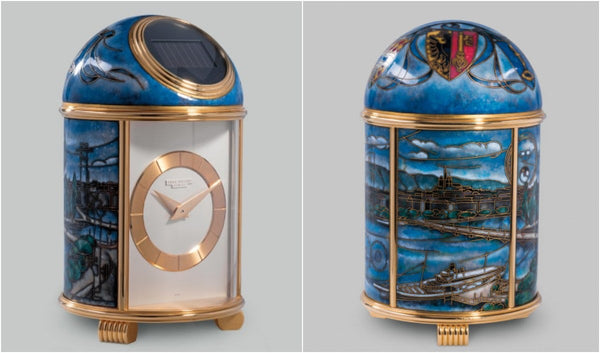
In 1954 and 1956, Patek Philippe received two patents for photoelectric clocks.
Two years later, they produced the first fully electric clock, winning the Miniaturization Award in the United States.
During the Quartz Crisis, they also utilized the Beta 21 movement to combat the growing demand for quartz watches.
This movement was subsequently adopted by Swiss manufacturers, including Rolex.
Patek Philippe uses quartz movements.
While some luxury brands have since moved away from the use of quartz, Patek Philippe continues to produce several technically advanced models today, including the women's Nautilus, Aquanaut, Gondolo, and Twentyfour.
3. All products are manufactured in-house

Patek Philippe's own factory, all production in-house (Patek.com)
Patek Philippe produces all of its components in-house rather than using external suppliers.
This allows us to have complete control and maintain strict standards.
This is why an ultra-complicated watch like the Caliber 89 takes years to develop.
Furthermore, all our watches are finished by hand, without the use of machines.
4. Patek Philippe's first minute repeater watch was for women

Patek Philippe Ladies Minute Repeater Watch (Patek.com)
In 1916, an Art Deco minute repeater with a platinum case and chain-link bracelet was developed for Mrs. DO Wickham.
Until then, Patek Philippe had only produced minute repeater pendant watches and pocket watches, but this watch was their first wristwatch.
The case was 27.1 mm in platinum. The first minute repeater made specifically for women would not be introduced until 2011, almost 100 years later, with the reference 7000R.
5. Tradition and Innovation: Patek Philippe's Advanced Research Department

Patek Philippe Advanced Research Minute Repeater 5750P (from Patek.com)
In 2002, Patek Philippe created a new department dedicated to the development of avant-garde technologies and new materials.
The manufacturer's philosophy is "tradition and innovation," making this new division a perfect fit.
In 2005, the new division introduced the monocrystalline silicon escape wheel.
This silicone is extremely hard, corrosion resistant, anti-magnetic, lightweight and does not require lubrication.
Ulysse Nardin first used silicon with the launch of the Freak in 2001.
The development of this new material would later lead to the launch of other silicone parts by Patek Philippe, helping to encourage other brands to adopt the material.
The process used for Spiromax balance springs involves Silinvar, a patented vacuum oxidation process from a partnership between the Swatch Group and Rolex.
Since then, brands including Patek Philippe have continued to release silicon parts.
6. Plus : Watches with production numbers under 1 million
Although Patek Philippe is an immensely popular brand known for the rarity and luxury of its models, it is said that it has produced fewer than one million watches since 1839.
At Patek Philippe, it takes nine months to make the most basic watch, with more complex models taking over two years.
In addition, every process is done by hand, and the craftsmen employed by Patek Philippe are highly skilled and well-trained.
In 2018, 62,000 watches were produced.
Patek Philippe also has a searchable archive that contains detailed examples of every watch they have made since 1839.
Buying a Patek Philippe

Throughout their long history that continues into the present day, Patek Philippe watches have become important objects for many collectors.
While royalty and celebrities own their watches, many collectors across different industries would love to own a Patek Philippe timepiece.
While 62,000 watches may sound like a significant number, it's only a fraction of the total production announced by brands like Rolex and Omega worldwide.
Due to demand, it may take some time to purchase a new Patek Philippe watch from an authorized retailer.




